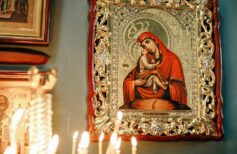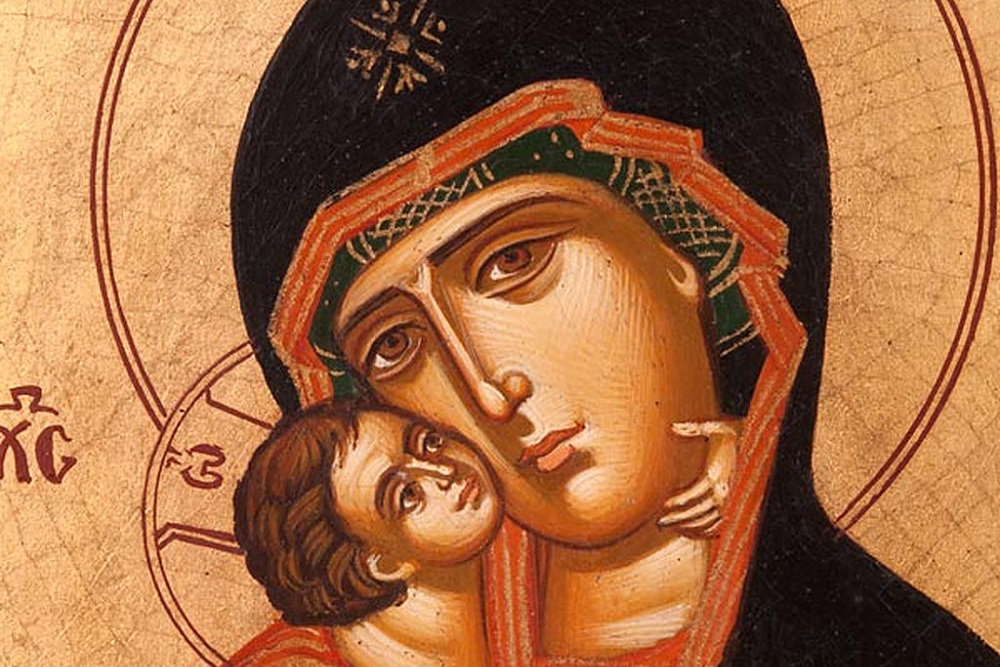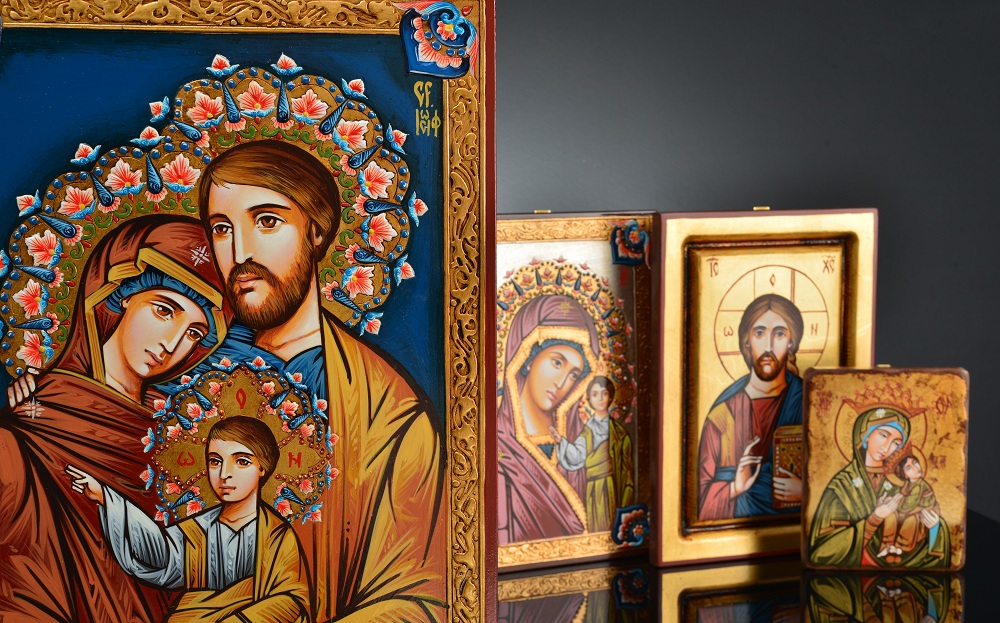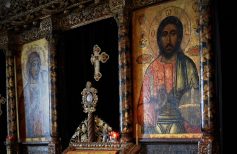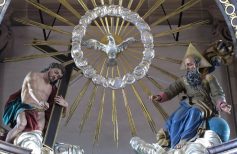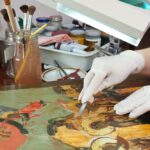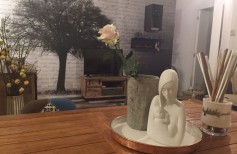Sacred Icons. Only mentioning them evokes exotic and charming suggestions, a way to live religion that is far from the modern concept only at first glance. Let’s find out all the secrets of this ancient and exciting art.
Contents
Holyart already talked about sacred icons in the past. How could it be otherwise? Few art displays can be compared to those representations, real expression of medieval religion, permeated with a deep symbolism that goes beyond the substance. In a previous article about Greek icons, we talked about how each detail in a sacred icon expresses a concept, a higher meaning. We described the creator of icons more like a writer than a painter, given the ability to link the constant references to evangelical episodes including spiritual messages hidden in each detail of the work. A sacred icon is the result of a mission that is theological before artistic.
Artisans and painters that master the art of icons use the ancient and strict rules of Byzantine iconography still today, following the techniques reported in the specific manuals, the hermeneia, which have to be followed verbatim. Each icon is unique, unrepeatable, and it draws its value exactly from this uniqueness.
What is an icon exactly?
It is a sacred representation painted on a table, typical of the Byzantine and Slavic art. The word ‘icon’ comes from the Russian ‘икона’, which comes from the ancient Greek εἰκών –όνος, from the verb eikénai, ‘resemble’, ‘look’. Another derivation is from the Byzantine Greek word eikóna, which can be translated as ‘image’.
In particular, the ancient Russian icons were usually reproduced on basswood, larch or fir tables. The necessary working to create the perfect base for sacred icons was long and arduous. In fact, the wood needed to be covered with multiple layers of rabbit-skin glue and chalk which were later smoothed with dried fish skin or sandpaper. The result was the so-called levaks, a smooth surface with no porosity, perfect to lay paint and gold plating. About colors, they were all natural, obtained from plants and minerals mixed with egg yolks. The frame was a fundamental element, because it was part of the painting as well, underlining the distance between earth and sky, between terrestrial and divine grounds. Even gold plating allowed obtaining amazing tridimensional effects.
![]()
Like Russian icons, also Romanian sacred icons come from the ancient Byzantine art. Their characteristics are warm and intense colors, and their characters are depicted with movable and human features. That makes them a bit closer to the Western sensitivity and aesthetic perception. They are painted on wooden or glass tables with tempera colors, embellished with fine decors in gold leaves.
How is the value of an icon assessed?
It’s not easy. We need to understand how to do that, or at least the basics of it, if we want to get closer to this wonderful world. Many websites sell sacred Icons without any warranty concerning their authenticity nor any explanation justifying their value.
When you evaluate a sacred icon, you need to keep in mind several parameters, such as the techniques used to make it, which ranges from a total handcrafting to silk-screen printing; the ‘school’ it comes from; the stroke of the artist; the size.
About techniques, we can easily sum up the current icons on the market as follows:
- silk-screen printing icons
- handmade sacred icons
- hand painted icons according to the traditional method, with golden painted background (that is, no gold nor silver leaves)
- hand painted icons according to the traditional method, with golden background made of a thin non-precious metal sheet (similar to gold or silver)
- hand painted icons according to the traditional method and using a precious metal sheet (gold or silver)
About schools, the sacred icons on the market today come mainly from Russia, Greece (those are the two most popular and appreciated schools), but also from Romania.
The distinctive stroke of the artist is the main element in an icon, regardless of its origin or materials. In particular, it shows through the way the faces are painted, in the use of colors and light.
The sizes of the icons can be many, but usually these three formats are the most commons:
- 18 x 22 cm (7×8.5 inches)
- 22 x 32 cm (8.5×12.5 inches)
- 32 x 44 cm (12.5×17 inches)
In Holyart catalog, you will find many types of icons, created with different techniques and materials, coming from all three mentioned schools.
Handmade sacred icons
In Holyart catalog, among all handmade sacred icons, we suggest the Russian icons hand painted on ancient tables in particular. They are icons made by master artisans coming from the various Russian iconography school, painted on tables from the previous century. The icons are made with the technique of egg tempera on wooden tables, levkas and golden background. Each icon comes with a warranty and originality certificate released by the experts of the Russian Minister of Cultural Heritage, and export documents.
Even painted Russian icons maintain the traditional techniques and are entirely handmade with tempera on basswood tables and decorated with gold leaves.
![]()
The hand painted icons coming from Romania by Holyart are unique pieces, entirely handmade on wooden tables using the technique of the golden leaves and tempera. Romanian artisans and painters follow the ancient and strict rules of the Byzantine iconography to create unique and unrepeatable masterpieces.
Of course, in Holyart store, you will also find wonderful silk-screen printed icons, cross-shaped icons and icons with silver and golden plate with RIZA.
The images of sacred icons
What do sacred icons depict? Russian icons in particular take inspiration from the portraits of Mary attributed to the Apostle Luke, to the Shroud and other very ancient representations of Jesus and Mary.
The subjects of the Romanian icons are often tied to Mary as sweet and loving mother, such as in the icons depicting her as Mother of God of Tolga, from the monastery of Tolga, located where the original icon was found, and to Jesus depicted as a Good Shepherd and protector. However, there is plenty of representations of the Sacred Family, saints and martyrs. A very popular one is the Mother of God of Korsun, named after the Russian city of Korsun, where according to the tradition, the evangelist Luke painted the first icon.
Greek icons can be divided according to the subjects represented:
- Icons of the Most Holy Mother of God
- Icons of the Most Holy Savior
- Melikte icons, of a Middle East setting, with Christ, the angels and the saints with Arabic skin tone and features.
- Icons of the movable feasts
- Icons of the fixed feasts
The working techniques of sacred icons
We already mentioned the various working techniques that are necessary to create a sacred icon worth of such definition, how the production time can be very long and the many required passages.
First of all, we need to find the right table.
Wood must be soft, such as basswood or fir, used in Russia, or beech wood. The table must be cleaned from all knots and smoothed very thoroughly. On the smoothed table is placed a linen or cotton cloth; upon the cloth, many layers of chalk melted with animal glue. Before performing each passage, we need to wait for the previous layer to be completely dry.
Then, the table must be smoothed with sandpaper, in order to obtain a perfectly smooth and white surface. This is the levaks we mentioned above.
Usually, the artisan accurately copies the icon from another existing one. Each stroke of the pencil is pressed with an awl to maintain the drawing even after layers of color and gilding. The gold leaves are placed on the parts that are meant to be golden, and then smoothed with agate stone.
After the gilding, the tempera made of natural pigment mixed with egg yolks is applied. The most recurring colors are red, blue, green, ocher, white and black. First go the dark colors, then the light ones, in a progressive clearing of the drawing, recalling also a symbolic passage from darkness to light.
As final layer, the olifa is applied. It is a mixture of boiled linseed oil and preservative materials that preserve the paint and enhance the transparency and the depth of colors.
Russian eggs
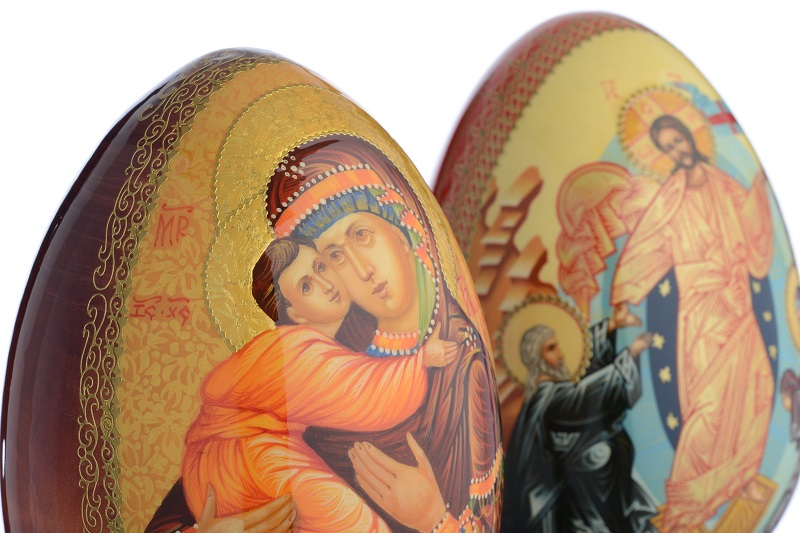
A special mention goes to Russian eggs. They are wooden eggs with hand painted and silk-screen painted icons, made in Russia. The techniques of decoupage is often used to make the eggs.
The hand painted Russian eggs are created by the best icon painters of the tradition of miniatures, an ancient technique born in Russia and characterized by the expressive details of the faces and the settings; they are made using a magnifying glass and using just one brush bristle. They are real small masterpieces, because the shape itself of an egg makes the working quite hard and only a few competent painters can actually paint and silk-screen paint icons on such a surface.

